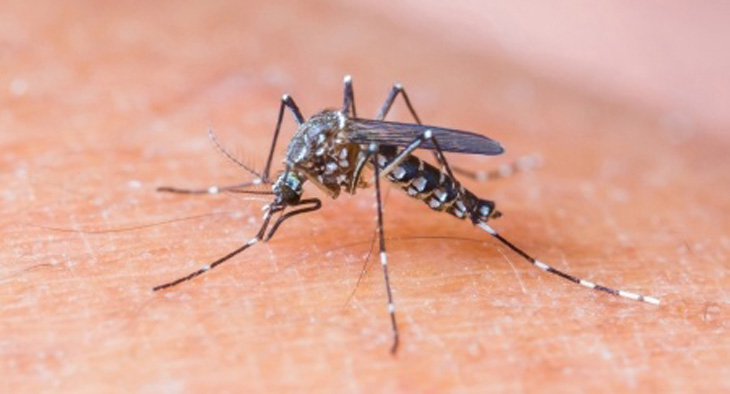In this section you will practise reading reports and articles, scientific vocabulary, and writing a case study.
1. Vocabulary quiz.
Do the quiz and practise more useful medical vocabulary. Choose the correct options.
2. An article.

Read an article from a scientific magazine about a study on the consumption of garlic and cholesterol levels. Choose the best heading for each paragraph of the article.
3. Summaries.
Read some of the paragraphs from the article again and choose the best summary.
Garlic may not improve the cholesterol profiles of people with moderately high levels of "bad" cholesterol, a new study shows. The researchers tested raw garlic and two different garlic supplements on nearly 200 adults with moderately high levels of LDL ("bad") cholesterol.
After six months, the patients showed no improvements in their average cholesterol or other blood fats (lipids), no matter what kind of garlic they had consumed. "Garlic supplements, or dietary garlic, in reasonable doses are unlikely to produce lipid benefits" in people with moderately high LDL cholesterol levels, write the researchers. But "the jury is still out" about whether garlic prevents heart disease, states an editorial published with the study in Archives of Internal Medicine.
None of the three forms of garlic affected participants' total cholesterol, LDL cholesterol, HDL cholesterol, triglycerides or other blood fats, the study shows.
According to Stanford’s Christopher Gardner, "The lack of effect was compelling and clear. The numbers just didn't move. There was no effect with any of these three products, even though fairly high doses were used."
Gardner says the study was large enough and long enough to have detected any cholesterol changes. "We even looked separately at the participants with the highest vs. the lowest LDL cholesterol levels at the start of the study, and the results were identical." However, the researchers don't rule out the possibility that garlic provides health benefits for other groups of people (such as those with higher LDL cholesterol levels) or requires higher doses to see results.
WebMD contacted the makers of Garlicin and Kyolic for their comments. Says Haru Amagase, PhD, director of research and development of Wakunaga of America, which makes Kyolic, "I don't know the exact research protocol for this study." Amagase says his company's studies show that Kyolic "does not have any influence" on people with normal cholesterol levels, "but if you have a higher cholesterol level, then you might have some reduction" in cholesterol. He also notes that another Kyolic study shows that "our garlic supplement was effective to slow down the plaque formation in a coronary artery," which he says is "much closer" to heart disease. "Multiple risk factors are deeply involved in cardiovascular disease," Amagase says. "Of course cholesterol is one of the risk factors, but it's not the single risk factor. So we believe that even though it may not have significant cholesterol reduction – I believe it should have moderate cholesterol reduction – but I think other risk factors [are] also important," Amagase says. The makers of Garlicin did not respond in time for publication.
4. Scientific and academic words.
Choose the best options to complete part of the article.
5. Scientific and academic words.
Choose the more academic or scientific options to complete the second part of the article.
6. Scientific and academic words.
Use the words to complete the last part of the article. This exercise is in two parts.
Part 1.
Part 2.
7. A case report.

Read the abstract of a case report and choose the appropriate keywords for this report.
|
Dengue virus infection in a French traveller to the hilly region of Nepal in 2015: a case report Birendra Prasad Gupta, Anurag Adhikari, Ramanuj Rauniyar, Roshan Kurmi, Bishnu Prasad Upadhya, Bimlesh Kumar Jha, Basudev Pandey and Krishna Das Manandhar Abstract Case presentation: A 43-year-old Caucasian female traveller from France presented with fever and abdominal pain following a diarrheal illness while visiting the central hilly region of Nepal. Over the course of 9 days, she developed fever, body aches, and joint pain, with haemorrhagic manifestation. She was hospitalized in India and treated with supportive care, with daily monitoring of her platelets. An assessment by enzyme-linked immunosorbent assay showed that she was positive for dengue non-structural protein 1. Upon her return to France, dengue virus was confirmed by reverse transcriptase-polymerase chain reaction. Conclusion: The district where this dengue case was reported is in the hilly region of Nepal, neighbouring the capital city Kathmandu. To the best of our knowledge, there have previously been no dengue cases reported from the district. This study is important because it aims to establish a potential region of dengue virus circulation not only in the tropics, but also in the subtropics as well, which in Nepal may exceed elevations of 1800 m. This recent case report has raised alarm among concerned health personnel, researchers, and organizations that this infectious disease is now on the way to becoming established in a temperate climate. |
8. Background: Meaning in context.
Now read the Background section of the report. Click on the underlined words and choose the best definition for each one.
9. Linking ideas and information.
Now read this section again and use the linking words to complete it. There are three extra items which are not used!
10. Modal verbs: Can and may.
Look at the examples.
Can and may
We use can to talk about things that are generally true.
The presentation of dengue virus infection can be asymptomatic or manifest as a febrile illness.
If subsequent infection occurs with a different serotype, it can predispose the host to a grave clinical outcome.
We use may to talk about possibilities.
Subsets of patients may develop dengue haemorrhagic fever.
The complications may result in the potentially lethal form of the disease.
Choose the correct option to complete each sentence.
11. Case presentation: The sequence of events.
Now read the Case Presentation section of the report. Put the events in the order that they happened.
Case presentation
A 43-year-old Caucasian female arrived in Kathmandu from Paris, and the same day travelled to Kavre District, in the inner hilly region (elevation: 1800 m) of Nepal. Nine days after arriving in the hilly region, she developed fever, body aches and joint pain. She also experienced loose stools and vomiting along with haemorrhagic manifestations such as facial flushing, petechiae and edema. She was subsequently admitted to a hospital in Goa, India, owing to health insurance requirements. Upon examination, her blood pressure and other vital signs were normal, without abdominal distension or bleeding. Ultrasonography of her abdomen and pelvis showed borderline splenomegaly (12 cm). An enzyme-linked immunosorbent assay was positive for dengue non-structural protein 1, although tests for immunoglobulins G and M were negative. She was given supportive care, including intravenous fluids. Daily monitoring of her platelet count revealed values as low as 37,000/mm3 (Table 1). She was discharged from the hospital in Goa after 5 days, and returned to Paris, where she was hospitalized briefly and discharged. Dengue virus was confirmed by reverse transcriptase-polymerase chain reaction in Paris.
12. Discussion: The sequence of events.
Read the Discussion section of the report and mark the statements true or false.
Discussion
The first case of DENV2 infection in Nepal was reported in 2004 in a Japanese traveller [11]. Subsequently, confirmed cases were reported from nine districts in the lowland Terai region of Nepal in 2006, and all four DENV serotypes were found to be co-circulating that year [9]. Over the years, the Terai belt, located south of the Himalayan foothills, has become an established dengue region. However, only limited data have been generated about DENV infection and disease in Nepal. Two major outbreaks have occurred in Nepal: one in 2010, dominated by DENV1, and the other in 2013, dominated by DENV2 [10, 12]. Dengue was reported in the highlands for the first time during the 2010 outbreak [12]. The 2013 outbreak also affected the highlands, including Kathmandu, though it was predominantly confined to Chitwan, Rupandehi, Parsa, and Dhanusa [10]. The shift of the viral disease from the subtropical Terai belt to the temperate hill region of Nepal is relevant to medical science because the disease could easily spread all over the world in the future, irrespective of climate [13]. The village to which the patient had travelled is at an elevation of 1800 m. It is becoming apparent that DENV is adapting to temperate climates as well. This may be because of temperature change due to global warming, the resistance of mosquitoes to drugs, or other factors, all of which may have contributed to the increase in dengue fever cases around the world in recent years.
Reports of dengue among travellers worldwide have been increasing, but high-quality data on incidence are lacking. The increase in international travel to dengue-endemic regions, with the associated risk of travel-acquired dengue, poses a serious concern [14]. The shift in temperature around the world has enabled DENV to thrive in colder regions where it was previously not reported.
13. Verb forms in a report.
Complete this section of the report by writing the verb (in brackets) in the correct form.
Remember: We often use passive forms in reports, when the important thing is the action – what is done to the person or thing – not who or what is doing the action.
The passive form is made up of: auxiliary be + past participle.
For example:
The patient was admitted to the hospital at 10 a.m.
Daptomycin 6 mg/kg IV is being administered every 24 hours.
If it is important who or what does the action, we use the active form of the verb.
For example:
Dr Brown signed the death certificate.
Not all types of mosquitoes transmit malaria.
Writing Tutorial 2.
In this tutorial you will write a case report and send it to your tutor.
Write the abstract for a case report for a recent or interesting case that you have been involved with.
Include the following sections in your abstract:
- Title
- Background (30-40 words)
- Case presentation (75-100 words)
- Conclusion (100-120 words)
- Keywords
If need be, you can refer to the abstract in the case report in the previous exercise and use that as a model.